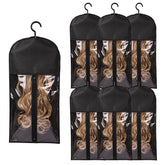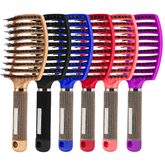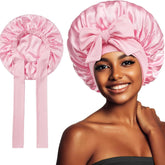Understanding the 'Autumn Shed': Why Your Hair Is Falling Out
:quality(85):upscale()/2025/11/06/507/n/29590734/ee59916a690c822362d109.23399936_.jpg)
As the temperatures drop and leaves begin to fall, many people notice more hair on their brushes and pillows. The so-called 'autumn shed' is a seasonal rise in hair shedding that feels alarming but is usually a physiological response rather than permanent loss. Trichologists and hair experts say it’s often temporary, but knowing what’s typical — and when to seek help — can ease worry and guide practical care.
What is the autumn shed and why does it happen?
The autumn shed describes a pattern where people report increased hair shedding during late summer and autumn. Hair grows in cycles (anagen or growth, catagen or transition, and telogen or resting) and around 10% of hairs are normally in telogen at any time. Seasonal shifts, daylight changes, environmental stressors and the natural timing of hair cycles can push more hairs into telogen, leading to noticeable shedding a few weeks or months later.
Experts also link seasonal shedding to cumulative summer stressors — sun exposure, saltwater and chlorine, heat styling and lighter diets on holiday — which can provoke a temporary telogen effluvium. Importantly, this is distinct from permanent hair thinning: autumn shedding usually resolves when the triggering factors subside.
How to tell normal seasonal shedding from a problem
It helps to learn what to expect and what to monitor. Normal seasonal shedding typically means:
- Gradual increase in loose hairs on your brush, in the shower or on your pillow over several weeks.
- No widening parting or sudden bald patches.
- Overall hair density returns over months as hairs re-enter the growth phase.
Signs that warrant medical advice include persistent, heavy shedding beyond four to six months, patchy hair loss, rapid thinning, or accompanying symptoms such as scalp discomfort. A GP or dermatologist can investigate underlying causes like iron deficiency, thyroid dysfunction, hormonal changes or chronic stress.
Practical steps to support hair during the autumn shed
While seasonal shedding is usually self-limiting, gentle care and lifestyle adjustments can reduce breakage and support regrowth. Consider the following practical actions:
- Be gentle when detangling: use a wide-tooth comb or a soft-bristle brush and start at the ends.
- Reduce heat styling and chemical stress where possible to prevent additional breakage.
- Prioritise scalp health: regular cleansing and lightweight conditioning keeps follicles functioning well.
- Eat a balanced diet rich in protein, iron, zinc and vitamins; if you suspect deficiency, consult your GP before supplementing.
- Manage stress with sleep hygiene, mindful movement and relaxation techniques — emotional load can influence hair cycles.
For those who like a targeted routine, a weekly nourishing mask, a scalp massage to boost circulation and avoiding tight hairstyles can make a practical difference while you wait for hair growth cycles to rebalance.
When to see a professional
If you’re unsure whether your shedding is the autumn shed or a sign of a deeper issue, a check with a GP or hair specialist is sensible. They may ask about diet, recent illnesses, medication changes, family history and perform blood tests to rule out deficiencies or hormonal causes. A trichologist or dermatologist can offer tailored treatments and monitor recovery.
- Seek medical advice if shedding is rapid, patchy or accompanied by scalp pain.
- Talk to a clinician if you notice a pronounced change in density or if symptoms persist beyond six months.
Takeaway
Autumn shedding is a common, usually temporary phenomenon connected to hair’s natural cycles and seasonal or environmental stressors. Gentle haircare, a nutrient-rich diet and stress management often help. If shedding is severe, sudden or prolonged, consult a GP or specialist to rule out underlying causes and get personalised advice.
Explore More: Discover related reads from Hairporium — News • Guides • DIYs • Expert Articles.
More From the Experts: Read interviews and insights from stylists and professionals on Hairporium Expert Articles.







